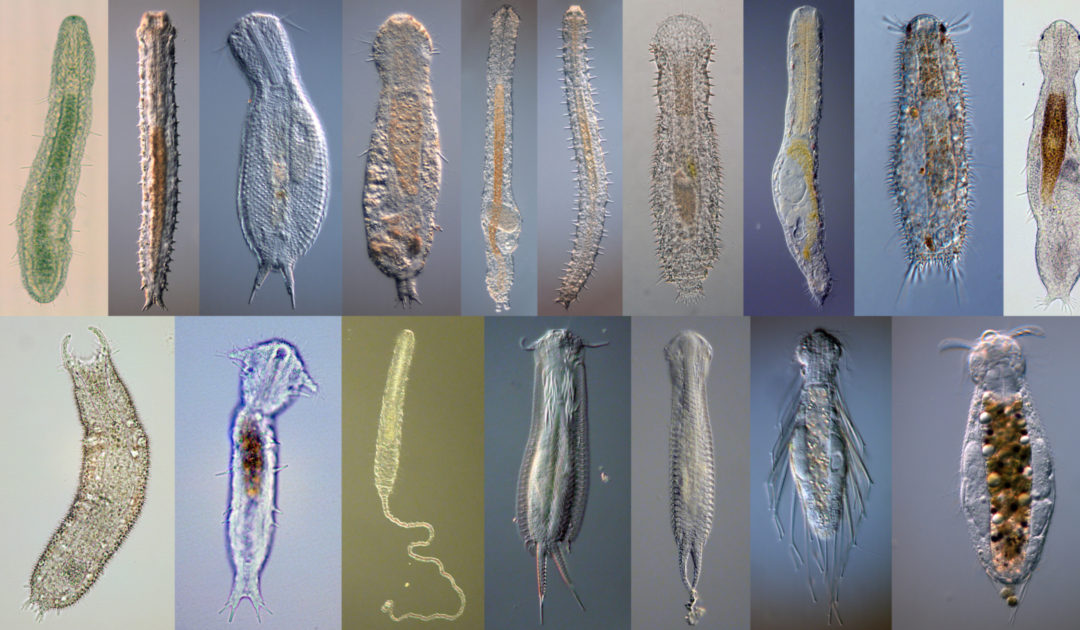Research
Taxonomy and Diversity of Gastrotricha
Species of Gastrotricha form a monophyletic group within the Bilateria and are typical members of the meiofauna. Especially the marine, predominantly interstitial (the spaces between sand grains inhabiting), Macrodasyida are benthic organisms.
The gastrotrich subtaxon Paucitubulatina shows an emphasis of distribution in lacustrine habitats. Marine Paucitubulatina are as well typical elements of the interstitial community whereas there are epipelic, periphytic or even semiplanktonic forms among freshwater species.
The marine genus Neodasys plays a unique part in terms of systematics as it is quite likely the most primitive group. Gastrotrichs are mainly worm-, strap- or flask-shaped animals with complex organ systems and oftentimes complicated surface differentiations such as plates, scales, spines, hooks, or keels. Body length is usually between 100 and 1000 µm, while few species may reach a length of up to 3 mm. Gastrotrichs solely feed on microscopic organisms such as bacteria or unicellular algae.
Taxonomy deals with the description and systematization of species. By means of different microscopic (light microscopy, scanning electron microscopy), graphic (e.g. vector drawing), and molecular techniques (DNA sequencing), new species are described from diverse habitats such as ponds, beaches and the deep sea. The precise knowledge of taxa is crucial to understand diversity patterns of areas and distributions of species. This division is part of different international research projects that aim to uncover such patterns in diverse ecosystems such as the Caribbean Sea, the sublittoral of oceanic islands, or the summit plateaus of seamounts.
